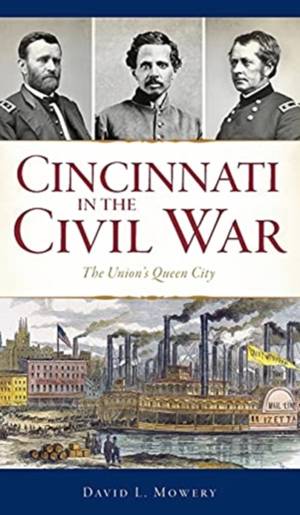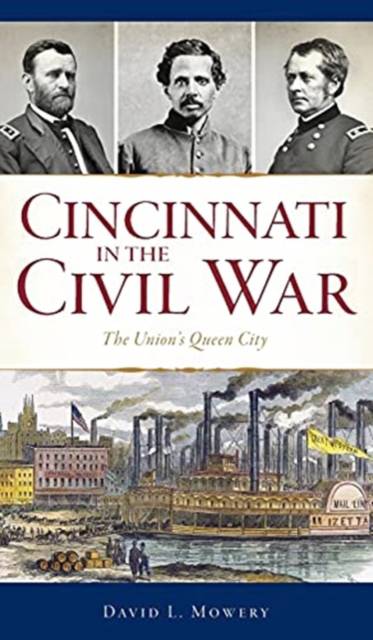
- Afhalen na 1 uur in een winkel met voorraad
- Gratis thuislevering in België vanaf € 30
- Ruim aanbod met 7 miljoen producten
- Afhalen na 1 uur in een winkel met voorraad
- Gratis thuislevering in België vanaf € 30
- Ruim aanbod met 7 miljoen producten
Zoeken
€ 56,95
+ 113 punten
Omschrijving
During the Civil War, Cincinnati played a crucial role in preserving the United States. Not only was the city the North's most populous in the west, but it was also the nation's third-most productive manufacturing center. Instrumental in the Underground Railroad prior to the conflict, the city became a focal point for curbing Southern incursion into Union territory, and nearby Camp Dennison was Ohio's largest camp in the Civil War and one of the largest in the United States. Cincinnati historian David L. Mowery examines the many different facets of the Queen City during the war, from the enlistment of the city's area residents in more than 590 Federal regiments and artillery units to the city's production of seventy-eight U.S. Navy gunboats for the nation's rivers. As the Union's Queen City, Cincinnati lived up to its name.
Specificaties
Betrokkenen
- Auteur(s):
- Uitgeverij:
Inhoud
- Aantal bladzijden:
- 322
- Taal:
- Engels
- Reeks:
Eigenschappen
- Productcode (EAN):
- 9781540246844
- Verschijningsdatum:
- 19/04/2021
- Uitvoering:
- Hardcover
- Formaat:
- Genaaid
- Afmetingen:
- 127 mm x 203 mm
- Gewicht:
- 444 g

Alleen bij Standaard Boekhandel
+ 113 punten op je klantenkaart van Standaard Boekhandel
Beoordelingen
We publiceren alleen reviews die voldoen aan de voorwaarden voor reviews. Bekijk onze voorwaarden voor reviews.








